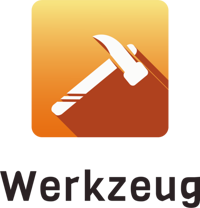Dealing with Request Data¶
The most important rule about web development is “Do not trust the user”. This is especially true for incoming request data on the input stream. With WSGI this is actually a bit harder than you would expect. Because of that Werkzeug wraps the request stream for you to save you from the most prominent problems with it.
Missing EOF Marker on Input Stream¶
The input stream has no end-of-file marker. If you would call the
read() method on the wsgi.input stream you would cause your
application to hang on conforming servers. This is actually intentional
however painful. Werkzeug solves that problem by wrapping the input
stream in a special LimitedStream. The input stream is exposed
on the request objects as stream. This one is either
an empty stream (if the form data was parsed) or a limited stream with
the contents of the input stream.
When does Werkzeug Parse?¶
Werkzeug parses the incoming data under the following situations:
you access either
form,files, orstreamand the request method wasPOSTorPUT.if you call
parse_form_data().
These calls are not interchangeable. If you invoke parse_form_data()
you must not use the request object or at least not the attributes that
trigger the parsing process.
This is also true if you read from the wsgi.input stream before the
parsing.
General rule: Leave the WSGI input stream alone. Especially in WSGI middlewares. Use either the parsing functions or the request object. Do not mix multiple WSGI utility libraries for form data parsing or anything else that works on the input stream.
How does it Parse?¶
The standard Werkzeug parsing behavior handles three cases:
input content type was
multipart/form-data. In this situation thestreamwill be empty andformwill contain the regularPOST/PUTdata,fileswill contain the uploaded files asFileStorageobjects.input content type was
application/x-www-form-urlencoded. Then thestreamwill be empty andformwill contain the regularPOST/PUTdata andfileswill be empty.the input content type was neither of them,
streampoints to aLimitedStreamwith the input data for further processing.
Special note on the get_data method: Calling this
loads the full request data into memory. This is only safe to do if the
max_content_length is set. Also you can either
read the stream or call get_data().
Limiting Request Data¶
The Request class provides a few attributes to control how much data is
processed from the request body. This can help mitigate DoS attacks that craft the
request in such a way that the server uses too many resources to handle it. Each of
these limits will raise a RequestEntityTooLarge if they are
exceeded.
max_content_lengthStop reading request data after this number of bytes. It’s better to configure this in the WSGI server or HTTP server, rather than the WSGI application.max_form_memory_sizeStop reading request data if any form part is larger than this number of bytes. While file parts can be moved to disk, regular form field data is stored in memory only.max_form_partsStop reading request data if more than this number of parts are sent in multipart form data. This is useful to stop a very large number of very small parts, especially file parts. The default is 1000.
Using Werkzeug to set these limits is only one layer of protection. WSGI servers and HTTPS servers should set their own limits on size and timeouts. The operating system or container manager should set limits on memory and processing time for server processes.
If a 413 Content Too Large error is returned before the entire request is read, clients may show a “connection reset” failure instead of the 413 error. This is based on how the WSGI/HTTP server and client handle connections, it’s not something the WSGI application (Werkzeug) has control over.
How to extend Parsing?¶
Modern web applications transmit a lot more than multipart form data or
url encoded data. To extend the capabilities, subclass Request
or Request and add or extend methods.
